Unit Conversion | The Complete SAT Course - Class 10 PDF Download
Unit conversion is a multi-step process that involves multiplication or division by a numerical factor. There are different ways to measure weight, distance, and temperature. In several countries, distance is measured in kilometers, weight in kilograms, and temperature in celsius. Let's say you're on vacation in India, and you're told that the distance between the two cities is 100 kilometers.
What is Unit Conversion?
Unit conversion is a process with multiple steps that involves multiplication or division by a numerical factor or, particularly a conversion factor. The process may also require selection of the correct number of significant digits, and rounding. Different units of conversion are used to measure different parameters.
- Measuring Length
- Measuring Weight
- Measuring Capacity
- Measuring Temperature
In mathematics, we convert the units of measurement to understand better. For example, the length of a table is measured in inches whereas the length of a garden is measured in yards to make it simple to understand. We cannot measure the length of a finger in miles. To measure different quantities, units of measurements are required.
The conversion of units is required to solve various mathematical problems. For example, if the length of a rectangle is given is inches whereas the breadth is given in feet, then to determine the perimeter of the rectangle, we need to convert the units to make them uniform. Hence, it is necessary to learn the concept of unit conversion.
Definition of Conversion of Units
By definition conversion of units means the conversion between different units and measurements of the same quantity done by the process of multiplication or division. In maths, conversion is the process of changing the value of one form to another for example inches to millimeters, or liters to gallons. Units are used for measuring length, measuring weight, measuring capacity, measuring temperature, and measuring speed.
Conversion of Units Measurements
Different units are used to measure different quantities. Let us explore the units used to measure the following:
- Length
- Temperature
- Area
- Volume
- Weight

Non-standard units of measurement are used in the early years of learning, to introduce children to the concept of measuring without them having to read any scales. Reading scales of any kind is a difficult skill in itself, so the idea of non-standard measures is to focus the child on the concept of heavier, lighter, longer, shorter, etc. before they move onto the next step of measuring using standard units.
To measure the length of the objects the non-standard measure used is that of hand spans. Using a handspan to measure objects is an informal way of figuring out the lengths. However, the measurements may vary owing to the subjectivity involved.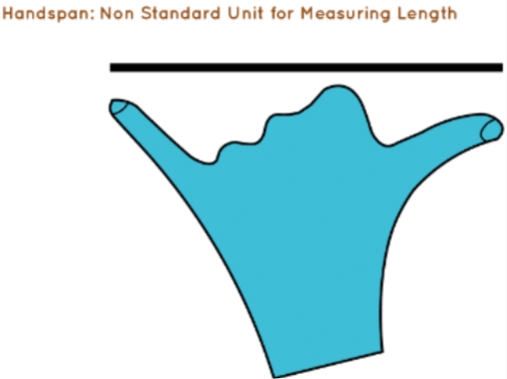
Given below is a unit conversion table depicting the relationship between different units.
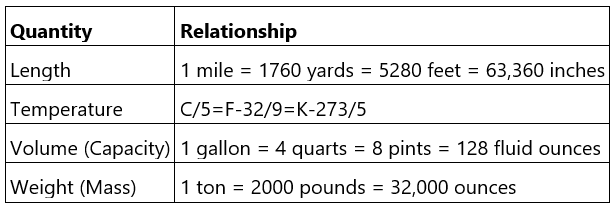
Unit Conversion Charts
Unit Conversion Charts provide us with conversion factors for conversions of different units of length, area, volume, temperature, etc, and serve as a reference for easy and quick calculations. The charts are also considered as the conversion of units formula where it helps in converting any quantity given in one unit to another. Let's have a look at the unit conversion chart tables below:
Length Unit Conversions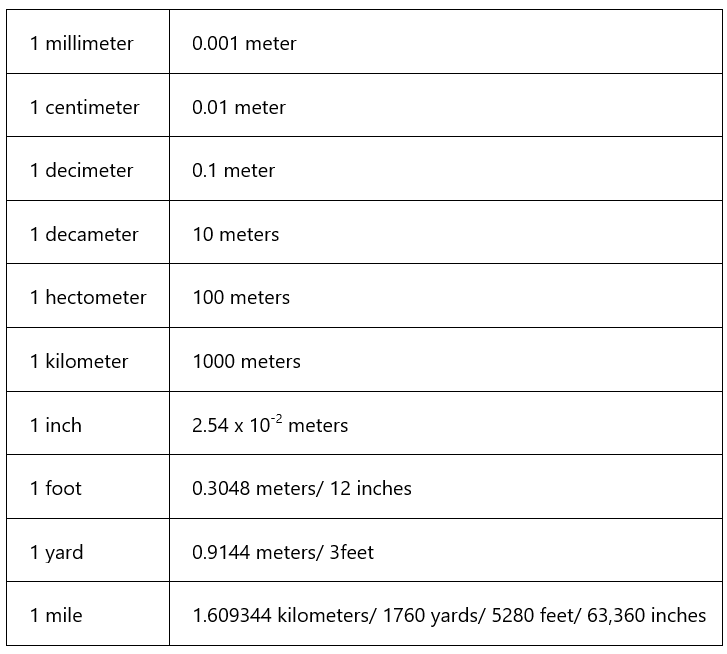
Area Unit Conversions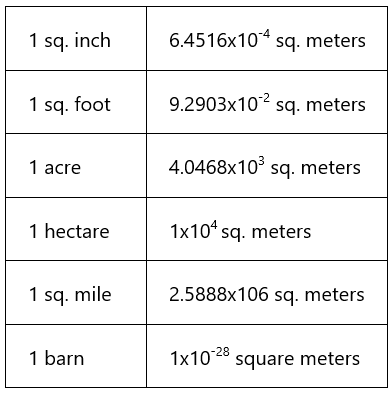
Temperature Unit Conversions
C/5 = F-32/9 = K-273/5
Volume Unit Conversions
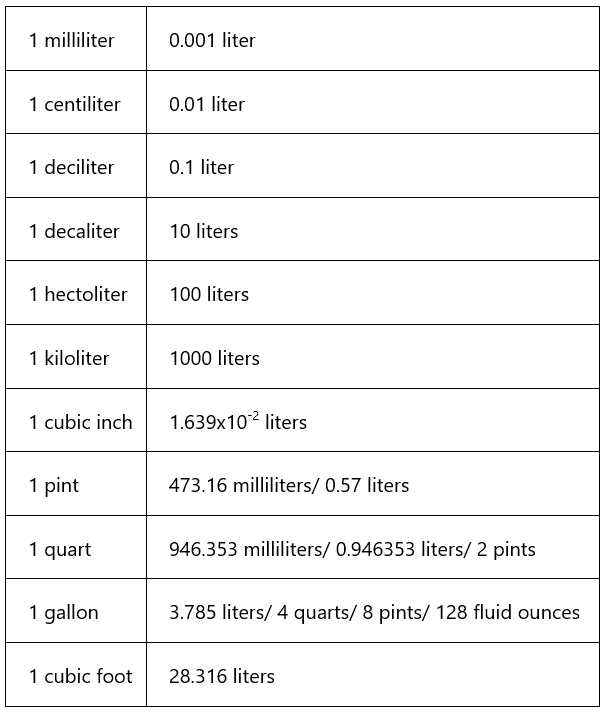
Mass Unit Conversions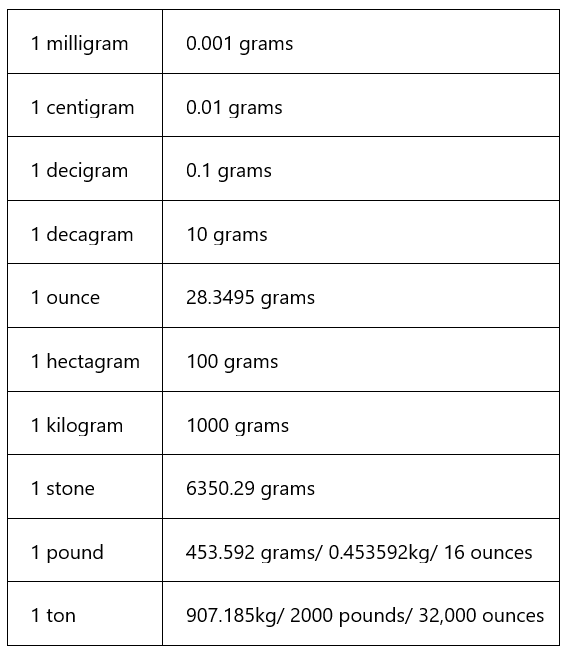
Conversion Factors
A conversion factor is a value or a number that is used to change one set of units to another, either by multiplication or division. An appropriate conversion factor makes calculation quick and easy. For example, the appropriate conversion value, to convert inches to feet, is 12 inches = 1 foot, and for temperature conversions, we use C/5=F-32/9=K-273/5.
Conversion of Units Example
Example 1: Robert has 200 ounces of sand in a box. He adds 100 ounces of more sand into it. How much sand does he have in total in pounds?
Solution: First, determine the total amount of sand in ounces.
200 ounces +100 ounces = 300 ounces
Now, convert the amount of sand into pounds.
1 ounce = 0.0625 pounds. 300 ounces of sand in pounds is: 300 ounces x 0.0625 pounds/ounce = 18.75 pounds
Therefore, Robert has 18.75 pounds of sand.
Example 2: Amy traveled 15 miles to visit her grandmother. How did she travel in yards
Solution: Since 1 mile = 1760 yards, multiply 15 miles by 1760 to determine the distance traveled in yards: 15 miles x 1760 yards/mile = 26,400 yards
Therefore, Amy traveled 26,400 yards to visit her grandmother.
|
433 videos|220 docs|166 tests
|
















